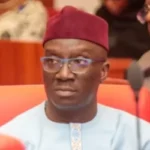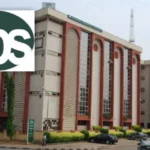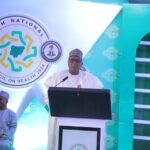It is a framework within which other planned activities take place. It covers all aspect of human endeavour and the aspect of natural and man-made resources for harmonious growth and development.
I decided to define the concept of Physical Planning in the professional point of view to enable readers to see the links between Governor Rabiu Musa Kwankwaso’s developmental projects and principles of Physical Planning. The traditional settlement of Kano that was founded more than 1000 years ago, faces serious challenges in terms of provision of infrastructure and other services due to urbanization and its effects. Today, Kano has completely changed, and by the year 2015 Insha’Allah it will regain its lost glory as a commercial, social, educational and economic hub of sub-Saharan Africa. Within the first two years of this administration, the state government has achieved a lot.
Worthy of recognition however, is the Creation of new cities of ‘Kwankwasiyya’ and ‘Amana’ along Zaria road and ‘Bandirawo’ along Dambatta road to expand and re-direct the growth pattern of the old city. With associated necessary facilities provided in the cities such as good road network, water, electricity, schools, clinics, fire service, police out-post, neighborhood centres, sanitary facilities and recreational facilities to mention but a few. Therefore, by the time the project is commissioned, the stock of the housing in Kano will be increased thereby decreasing excessive demand of housing in a particular location. These will definitely bring down prices/rent in the housing market due to competition. Affordability is income related, of course the low income cannot afford to own or rent these houses. But, the state Government created Employees Housing scheme, where one can obtain housing loan from Dala Buildig society and directly from the state Government. The Government subsidized the price and created Advance payment method where one can pay initial deposit and complete the payment instalmentally within a given period of time. Similarly, suspension of informal land transaction known as ‘Awan igiya’ within Kano metropolis and its surrounding without due regard to Physical Planning Principles is another commendable effort. Instead, sites and services schemes were introduced to enable both land owners and prospective buyers enjoy the value of land resources typical example is the Layout at Kano Western Bye-pass. The initiative will reduce mounting excessive pressure on land within city centre. This will achieve balance growth and development.
Road Network as an integral part of land use planning, road net work or circulation mostly ranked as second to residential building land use development. The effort of Kwankwaso Administration on road rehabilitation and reconstruction also deserves commendation. All major road entries to Kano metropolis were expanded and drainages well constructed at both sides of the roads. Such as Gwarzo road, Hadejia road, and Zaria road. In the past, before the expansion works, commuters spent hours on the road before arrival to their various destinations. Local routes within the city and its surrounding neighborhood were equally rehabilitated. Flyover bridges which were seen by many people as complex and impossible task but today its features has already sprang up to almost finishing level. Pedestrian bridge and iron crossing barrier, walkways were constructed along major traffic conflicts points. This however is a remarkable achievement. Congestion, traffic delay stressed vehicular pedestrian conflicts will be a thing of the past in the near future. Pedestrian crossing, traffic light, street lightening and above all, traffic monitors (KAROTA) were also introduced in its efforts to safe guard the people lives and harmonize the human activities in urban land space.
In the local region moreover, five (5) KM of roads with their street light were awarded in the 44 LGA’s of Kano. This will boost their socio-economic base as well as reducing rural urban migration.
Solid waste Management which was another area of serious challenge; the administration has improved the capacity of REMASAB by acquiring more waste disposal equipments/machineries and recruited competent personal to manage waste in Kano State. Also of much interest to note is provision of waste deposit drums in the knock and corners of Kano metropolis which will facilitate mechanical evacuation by the assigned waste collection officials. All these were achieved within two (2) years of Kwankwasos’ administration.
Empowerment and Informal Sector Organization. Empowerment of vulnerable group like youth, women etc. were accorded serious attention in which more employment opportunities were provided in various sectors like agriculture, security, transportation , sport, tourism, education etc. all in an effort to empower the community. Informal sector activities which provided people with various source of livelihood on street were also improved for instance organized streets trading is now visible at Murtala Mohammed Library, State road by Iyaka road Junction, Post office and Sani Abacha Way by Bompai road. These groups of traders sell vegetables, fruits, meats and goods that are important to the people. Road Side mechanic were also reorganized and rehabilitated. Local Barbers, patent medicine stores were also empowered.
Landscaping and beautification is another important feature of Physical Planning. Most abundant green areas and gardens in the city were resuscitated, street furniture were provided in addition to planting of more trees. Round -abouts were not left out as majority of them undergone total rehabilitation all in a bid to improve the quality of life of the people.
Kano Geographic Information System (KANGIS) was established by the administration to safe guard the use of urban and rural lands and control of its development. When fully operational it will check the abuse of urban and rural lands by ensuring optimum utilization, reduces land conflicts enhancing judicial distribution and revenue base of Kano as uses of land will be captured. This will seriously check misuses since land is a scarce resource which is not renewable and must therefore adequately be protected.
In conclusion, some of the achievement listed above are few out of numerous projects executed by Kwankwasos’ administration. However, it will only be important to the people and professional like us when they are sustainable. Sustainability is the biggest challenges pose to the administration. Therefore government should develop a mechanism for its full support and sustainance.
Sani, an environmental planner, writes from No. 23 Murtala Mohd Way, Kano.
 Join Daily Trust WhatsApp Community For Quick Access To News and Happenings Around You.
Join Daily Trust WhatsApp Community For Quick Access To News and Happenings Around You.


